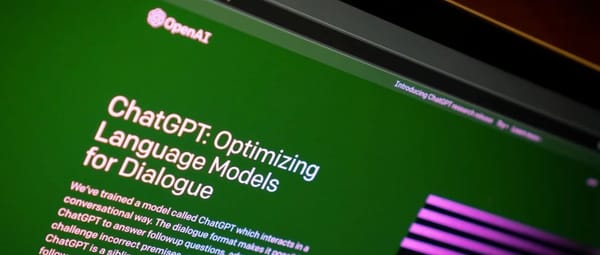Just Now: Musk’s Second-Gen Starship Completes Final Flight! Bonus: Jensen Huang Personally Delivers Supercomputer
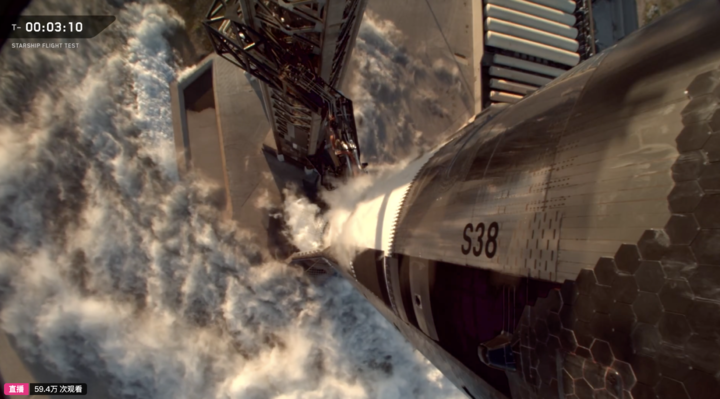
Starship V2 Farewell Mission — A Smooth Final Flight
The 11th and final Starship V2 mission ended successfully just moments ago.
Key highlights:
- Booster 15 (flight-proven) took to the skies again.
- 8 Starlink simulators deployed flawlessly.
- Multiple heat shield tiles removed for extreme stress testing.
- Spacecraft concluded with a planned breakup splashdown over the Indian Ocean.

This flight closes the chapter on Starship V2 and signals the shift toward V3 — SpaceX’s pivotal variant aimed at enabling future Mars landings. As Elon Musk has often emphasized, Starship is a continuously iterated system.
---
VIP Visit — Jensen Huang Delivers DGX Spark
An unexpected highlight: NVIDIA CEO Jensen Huang visited Starbase, Texas, delivering the upcoming DGX Spark personal supercomputer to Musk.
Notably, in 2016, Musk’s team was among the first to receive a DGX‑1 from Huang.
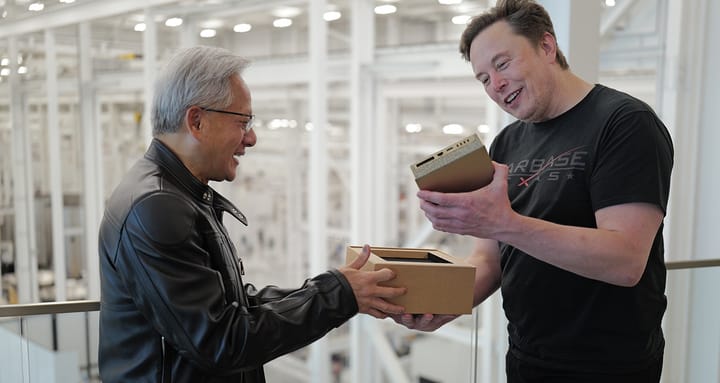
---
The Finish Line for V2 — The Starting Line for V3
Mission hardware:
- Super Heavy Booster 15 (B15‑2)
- Starship Ship 38 (S38)
Booster 15 Background
- Flight‑proven — previously flew during Mission 8.
- Equipped with 24 recycled Raptor engines.
- Demonstrated the “chopstick rocket catch” in earlier flights.
- This mission’s primary goal: validate new landing ignition engine configuration for next-gen boosters.
Launch Sequence Recap
- Liftoff — Super Heavy ignited all engines and climbed toward orbit.
- Hot‑stage separation (~2.5 minutes in) —
- The Ship ignited its 6 engines (combined thrust ≈ 64 Boeing 747s).
- Super Heavy initiated boostback toward splashdown zone.
- Booster flip maneuver — reoriented for retro-thrust.
- Reverse burn — 13 engines first, then switched to 5 for precise control.
- Previously: 3 engines used.
- V3 design: 5 engines for redundancy.
- Landing ignition test succeeded offshore in the Gulf of Mexico (no tower capture).
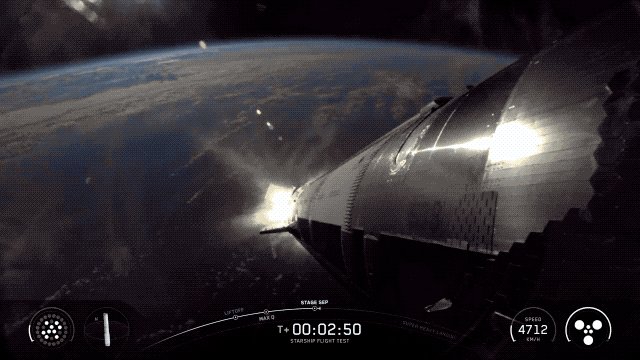
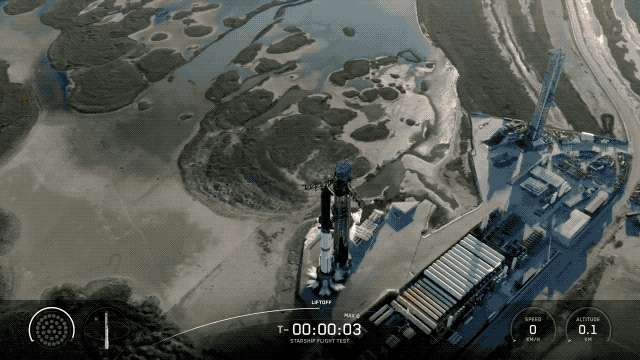
---
One Launch = Twenty — Musk’s Starlink V3 Strategy
The Starship upper stage’s key tasks:
Starlink Simulator Deployment
- 8 simulators (each ≈ 2,000 kg) — total ≈ 16,000 kg payload.
- Released into same suborbital trajectory as Starship.
- Smooth deployment — 1 minute per satellite.
- Side payload bay door opened mid‑orbit (unlike nose cone designs).
- Rail system improvements eliminated previous hiccups.
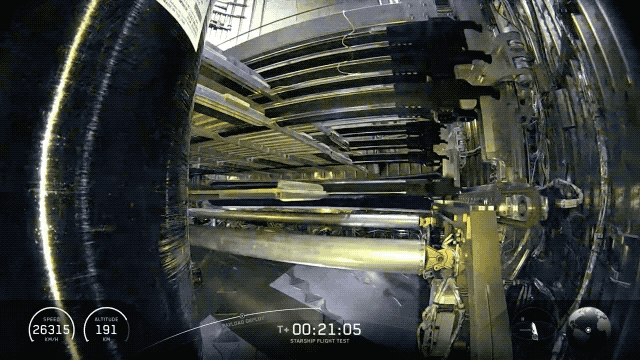
Why This Matters
SpaceX aims for Starship to:
- Replace Falcon 9 as primary satellite deployment platform.
- Launch Starlink V3 satellites:
- 20× Falcon 9’s per‑launch capacity.
- Up to 60 Tbps network capacity added per launch.
- Lower cost/kg to orbit.
Additional Testing
- Single Raptor re‑ignition in space — simulated de‑orbit burn for future missions.
---
Extreme Heat Shield Testing
Starship’s Thermal Protection:
- Covered in thousands of tiles with small gaps (allow metal structure expansion/shrinkage).
- Gaps sometimes allow plasma infiltration → edge overheating.
Lessons from Flight 10
- Tile gap infiltration caused local ablation.
- Investigation: solid propellant residue ignited during venting → partial structure & flap damage.
Flight 11 Experiment
- Deliberately removed tiles from fragile zones — no ablative backup layer in some areas.
- Exposed structure tested against direct re‑entry heat.
- Wider use of Crunch Wrap — high‑temp felt blocking plasma between tiles.
- First possible full‑craft deployment of Crunch Wrap.
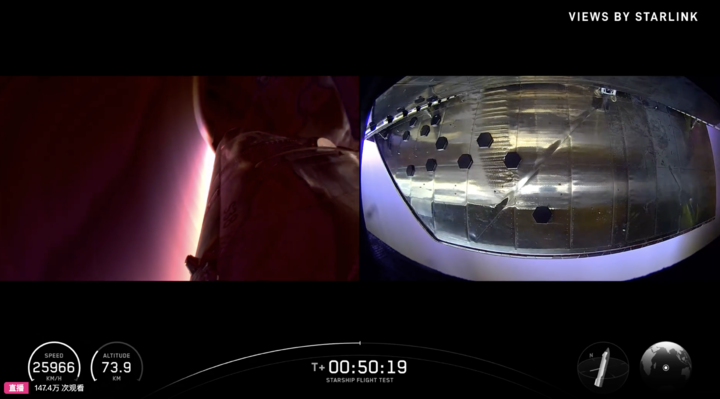
Production scale:
- Florida site: ~1,000 tiles/day currently.
- Designed capacity: ~7,000 tiles/day (≈ 1 tile every 13 seconds) — enough for 10 Starships/month.
---
Testing Future RTLS Flight Profiles
Complex Re‑entry Maneuvers
- Dynamic skew during supersonic/hypersonic flight — rolling sideways for simulated precision landings.
- Large turn in subsonic stage before belly landing posture — tests for tower-assisted landings.
Conclusion
- Splashdown in Indian Ocean — planned destruction post-impact.
- Data collected for:
- Next-gen Super Heavy booster.
- Heat shield stress validation.
- Future Return‑To‑Launch‑Site procedures.
- Marks final launch for current Starbase pad — major upgrades ahead.
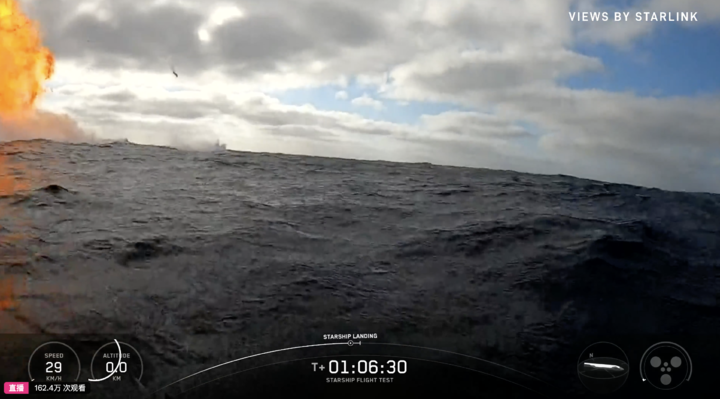
---
Iteration as Innovation
Fly‑and‑modify approach — test in real flight, improve rapidly, skip long ground simulations.
High risk, but extreme iteration speed — core to Musk’s philosophy:
Faster progress via faster failures.
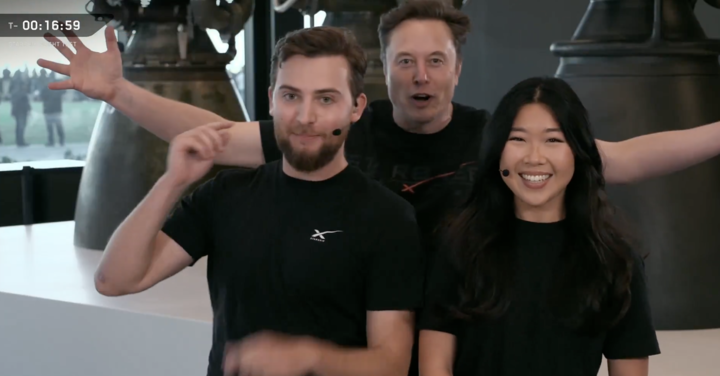
---
Parallels in Content Creation
In aerospace and media alike, iterative improvement accelerates outcomes.
Like SpaceX, creators use open-source AI platforms such as AiToEarn官网 to:
- Generate, publish, and monetize content across multiple channels.
- Integrate tools for cross‑platform publishing, analytics, and ranking.
- Apply feedback loops for rapid refinement.
Explore AiToEarn核心应用 for strategies that mirror Starship’s fast iteration philosophy — whether you’re aiming for Mars or viral reach.

